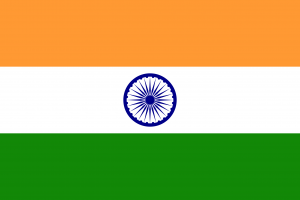Language/Hindi/Culture/Geography-and-History
 Հայերէն
Հայերէն Български език
Български език 官话
官话 官話
官話 Hrvatski jezik
Hrvatski jezik Český jazyk
Český jazyk Nederlands
Nederlands English
English Suomen kieli
Suomen kieli Français
Français Deutsch
Deutsch עברית
עברית Magyar
Magyar Bahasa Indonesia
Bahasa Indonesia فارسی
فارسی Italiano
Italiano 日本語
日本語 Қазақ тілі
Қазақ тілі 한국어
한국어 Lietuvių kalba
Lietuvių kalba Νέα Ελληνικά
Νέα Ελληνικά Şimali Azərbaycanlılar
Şimali Azərbaycanlılar Język polski
Język polski Português
Português Limba Română
Limba Română Русский язык
Русский язык Српски
Српски Español
Español العربية القياسية
العربية القياسية Svenska
Svenska Wikang Tagalog
Wikang Tagalog தமிழ்
தமிழ் ภาษาไทย
ภาษาไทย Türkçe
Türkçe Українська мова
Українська мова Urdu
Urdu Tiếng Việt
Tiếng ViệtIntroduction
Namaste! Welcome to the section on Geography and History in our Complete 0 to A1 Hindi Course. In this lesson, we will explore the diverse geography and rich history of India, including important figures, events, and cultural landmarks. Knowledge of Hindi culture and history will help you better understand the language and enrich your overall learning experience. Let's dive in!
Geography
India is the 7th largest country in the world by land area, located in South Asia. It shares borders with Pakistan to the west, China and Nepal to the north, Bhutan to the northeast, and Bangladesh and Myanmar to the east. The Indian Ocean lies to the south, giving India a long coastline of over 7,500 kilometers.
India's geography is incredibly diverse - with towering mountains, lush tropical forests, hot and arid deserts, and sandy beaches. The Himalayan mountain range forms the northern boundary of India, separating it from its neighbors. The country is also home to the Thar Desert, which is one of the largest in the world. The Ganges, India's holiest river, flows more than 2,500 kilometers from the Himalayas to the Bay of Bengal.
India has a total of 28 states and eight Union territories. Each of these states has its own unique cultural heritage and traditions, making India a treasure trove of diverse cultures, languages, and customs. Let's take a look at some important regions of India:
North India
North India is bounded by the Himalayas on the north and the Vindhyas on the south. It is home to some of the most famous cultural and historical landmarks in India, including the Taj Mahal, one of the Seven Wonders of the World.
South India
South India is known for its ancient temples, lush forests, and beautiful beaches. The region has a rich history, dating back to the ancient Dravidian civilization. Some of the most popular tourist destinations in South India include Hampi, a UNESCO World Heritage Site, and Kerala, which is known as "God's Own Country."
East India
East India is a region that includes the states of West Bengal, Bihar, Odisha, and Jharkhand. The region is known for its rich cultural heritage and history, including the ancient kingdoms of Magadha and Kalinga. East India is also home to some of the most famous festivals in India, including Durga Puja and Diwali.
West India
West India has a rich cultural and historical legacy and is home to some of the most famous landmarks in India, including the Ellora and Ajanta caves, which date back to the 2nd century BCE. The region is also known for its vibrant music, dance, and food.
History
India has a rich history that spans more than 5,000 years. The Indus Valley Civilization, which flourished from 2600 BCE to 1900 BCE, is one of the earliest known civilizations. Over time, India saw the rise and fall of various kingdoms and empires, including the Maurya Empire (321-185 BCE), the Gupta Empire (320-540 CE), and the Mughal Empire (1526-1857 CE), among many others.
India has also been the site of some of the world's most famous movements of nonviolent resistance, including the Indian independence movement led by Mahatma Gandhi, which helped to free India from British rule in 1947.
One of the most important figures in Indian history is Emperor Ashoka, who ruled from 268 to 232 BCE. Ashoka converted to Buddhism after his conquest of the Kalinga kingdom and became a great patron of the religion. His efforts to spread Buddhism throughout the country helped to shape India's cultural heritage and continue to have an impact on Indian society today.
Important Landmarks
India is home to many world-famous landmarks that reflect its rich cultural and historical history. Let's take a look at some of them:
- The Taj Mahal - a mausoleum built by Mughal Emperor Shah Jahan in memory of his wife Mumtaz Mahal.
- The Red Fort - a historic fort in Delhi that was the main residence of the Mughal Emperors for nearly two centuries.
- The Qutub Minar - a UNESCO World Heritage Site in Delhi that is among the tallest minarets in the world.
- The Ajanta and Ellora Caves - rock-cut cave complexes that are a testament to the art and architecture of ancient India.
- The Hawa Mahal - a palace in Jaipur that is known for its distinctive honeycomb-like architecture.
Conclusion
That's all for this lesson on Geography and History in India. We hope you enjoyed learning about the diverse cultures and rich history of this fascinating country. By understanding its geography and history, you can begin to appreciate the complexities of the Hindi language and culture. Keep practicing and we'll see you in the next lesson!
Sources

